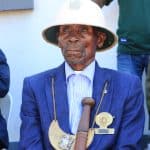By Shingirai Vambe
There is little, to no doubt, that every person on planet earth will be affected by climate change, regardless of their demo/geographic locations. As a result, there will be clean water shortages and food insecurities, health, social, economic and political instability.
Zimbabwe is endowed with vast human and natural resources, which are interdependent; it has one of the best climatic weather conditions and farming activities are the order of the day in most rural set-ups.
The change in weather and rainfall patterns has resulted in the increase of hunger in the rural areas and the number goes up daily. Statistics by independent consultants prove 70% of women in the rural areas are living in extreme poverty.
Post On Sunday recently visited three women (names withheld) in Makoni District who are self employed as farm brick makers.
Having kids, some of them at primary level, husbands not formally employed, the families hardly get enough hence the decision to support the family through back breaking manual work.
Two of the women at times work at the school garden to raise school fees for their children, everything goes from house work to gardening chores.
“The idea of brick molding came as a start to get enough money for new business venture which is less painful and feminine,” said Chipo. (Not her real name)

Regardless of the dangers to their health, to land degradation, deforestation and siltation, the level of desperation has left them without any choice.
From digging the hard ant hills, fetching water from the stream, molding the bricks to running with a wooden mortar, working towards creating 15 000 bricks is no easy feat for a woman.
One colleague answered and said the type of work done, is meant for men, not women.
Currently, farm bricks are being sold for US$30 for a 1000 bricks and local authorities have since banned residents from constructing their houses using farm bricks, recommending common and cement bricks.
The middlemen make more as they control the prices and influence buyers. It is difficult for women to battle it out on the road sides to the brick farms where buyers are enticed by the middlemen. It’s a dog eat dog, the owners of the bricks end up taking US$30 while the middlemen can even get US$50, pocketing the difference. Being an illegal project, there is no where to report, courts don’t entertain complaints with dirty hands, so to speak.
The cost of living has gone up and building a house in Zimbabwe is a big challenge for many, regardless of massive construction projects resulting in the shortage of cement. The climate crisis is leading to geo-political and geo-economic crisis around the world due to hunger and poverty.
United Nations report on Sustainable Development for Zimbabwe, between 2022 and 2026 clearly states that the humanitarian crisis continues to impede Zimbabwe’s progress towards the 2030 agenda of Sustainable Development.
The migration graph show a high movement from the urban to rural settlement happening and increasing since 2017, resulting in the demand for farm bricks, firewood for domestic use and other land use.
People are still cutting down trees and daily there is a delivery of firewood in various towns for sale to local restaurants.
Police manning roadblocks appear to ignore the lorries for reasons only known to them. In yester years, hefty fines were a deterrent to deforestation.
With most rural women are limited in achieving their full potential in entrepreneurship in Zimbabwe due to financial constraints and discriminatory social norms.
Loads and loads of trees have been cut down in Zimbabwe for curing of tobacco and molding of farm bricks. The question is, how many have been replaced through planting?
This is one major contributing factor to poor erratic rainfall patterns as the water table goes further down resulting in plants drying Shortages of drinking water for humans and animals has pushed families on the edge as they cut down on domestic livestock. The eco-system barely managing to sustain the cycle, unplanned artisanal mining activities using cyanide and unproven chemicals has resulted in water sources drying up with fish and fauna poisoned.
After a successful engagement and fruitful interactions, the women opted for less hard work than the brick molding project they were doing and appealed for sustainable livelihood projects.

With one of the husbands serving time in prison, one of the women said she had no choice but to fight for survival through brick molding, in order to put food on the table for her children.
With cracked feet, hard toughened hands, barefooted, the women look a decade older than their ages.
With the rain season anticipated in November, weather experts predict a normal to above normal rains.
With sky rocketing prices of seed and fertilizers, the women and a majority of subsistence farmers are set to share selected grain for seed. They again resort to use of organic material, which in most instances is only enough to feed and sustain a small portion of their rural plots measuring less that 2hectares.
Inorganic fertilization could see better harvests for those with larger herds of cattle as they use cow dung.
With depletion of grazing lands, outbreaks of animal diseases, most rural farmers own three to five beasts and these give very little manure.
Its time to adapt to small grains or keep the harvest basket dwindling.
To adapt or not to adapt to climate change is no longer a choice. Adapt or perish.











More Stories
Show of Power and Democracy As S.A Head To Polls, On May 29
CEO Africa Roundtable Conference, Hands On The Deck
El-Roi University Honors Dr Dube